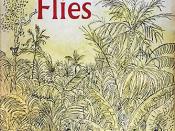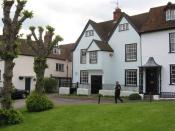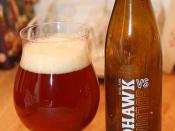Lord of the Flies provides one with a clear understanding of Golding's view of human nature. Whether this view is right or wrong is a point to be debated. This image Golding paints for the reader, that of humans being inherently bad, is a perspective not all people share. Lord of the Flies is but an abstract tool of Golding's to construct the idea of the inherent evil of human nature in the minds of his readers. To construct this idea of the inherent evil, Golding employs the symbolism of Simon, Ralph, the hunt and the island.
Golding drives the point that the instinctual evil within man is inescapable. At one point in the book, when the Lord of the Flies is representing all evil, this theory is stated as, "The Lord of the Flies was expanding like a balloon" (Golding 130). Along with this idea is the religious symbolism that is used for ineffectively confronting the evil.
At a point in the book, Golding has Simon, symbolic of Jesus Christ, confront the Lord of the Flies. This is a pig's head on a stick that is imagined to talk and represent the evil in all humans. Simon tries to act and spread the knowledge of this evil to others but is killed. This is a direct reference to the death of Christ, alluding to the Holy Bible.
At many points throughout Lord of the Flies, Golding writes for the characters to become gradually more and more evil. This attribute even reaches the symbols of goodness and order, such as Ralph. Once, when Ralph and Piggy go to the feast on Jack's beach, they begin to meld with the others and their evil ways. "Piggy and Ralph, under the threat of the sky, found themselves eager to take a...


